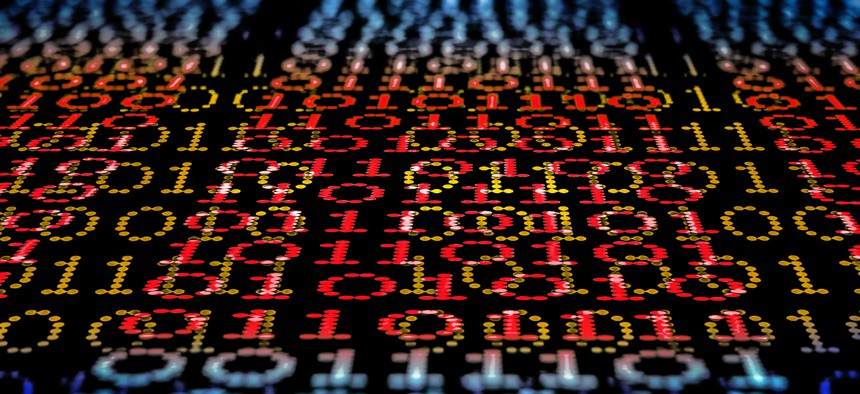
Getty Images/Matt Anderson
How cyber gray zone conflict can shape conventional war
As gray zone conflict becomes the norm, the intelligence community may have to make some changes to adapt.
As gray zone conflict becomes the norm, especially with cyber, the intelligence community may have to make some changes to adapt.
Michael Vickers, the former undersecretary of defense for intelligence, said modernizing for conflict in the gray zone, or below the level of war, means re-prioritizing and retargeting both existing and planned capabilities.
“I would argue that it requires change in our intelligence structure across the spectrum beginning with priorities: how much do we assign collection assets and analytical assets to this problem rather than other problems,” Vickers said during a Dec. 13 Center for Strategic and International Studies event on modernizing intelligence for the gray zone.
“We tend to put more emphasis on the military capabilities of our major adversaries or strategic intentions of their leadership, and obviously the intentions [spill] over into this area,” he said.
Vickers, who is now on the board of directors for BAE Systems, said gray zone conflict often blurs the lines between war and peace, with intensity of conflict swelling and fading over an extended period of time. But its persistence can often shape what conventional or open conflict to come, which he called the covert preparation for warfare.
“A lot of things you do in this so-called gray zone or all measures short of war -- planting things in information systems so you can do a cyber attack against an electrical power grid or something else -- have a big impact on shaping the actual conventional war,” he said. “Not just winning a Cold War competition short of war but potentially giving you first mover advantage in a conflict.”
Vickers said this is further complicated by the blurring of public and private realms, such as with cyber crime, where individuals can act on behalf of a nation state but also for personal gain, and by the seeming ineffectiveness of deterrence.
“Deterrence is almost non-existent in this world,” Vickers said. “You know there are a few things you can deter. But unlike big conventional war or nuclear war where deterrence really does work, or even cyber war at the high-end doesn’t work for cyber stuff at the lower end and so it just goes on all the time and it can hurt you.”
The intelligence community must be able to adapt to this, Vickers said, and while covert actions and gray scale are sometimes used precisely to avoid a larger conflict, the question of whether they can escalate into open war is still being sussed out, particularly with cyber.
“You have to separate, in a lot of cases, the tool from the spectrum of conflict,” he said. “So cyber, for example, is something that is applicable across the spectrum of conflict: it goes from espionage to attack but it also can be used as a tool of strategic warfare at the high end to cripple a society [homeland of your adversary] so much that ...it has nuclear-like effects.”
Shutting off the power grid could rise to that level, Vickers suggested, adding that cyber can also have “irritant effects” like distributed denial of service attacks, or be used in conventional war to disrupt missile radar systems.
But one of the biggest challenges could be behavioral. Vickers said the intelligence community must get better at looking in new places for subtle indicators, and at stringing together all of the smaller acts just short of war to contextualize what could be a larger end goal. The warning signs could be right under analysts' noses, he said, much like the early meddling in U.S. elections.
Vickers said that when it came to Russian interference in the 2016 presidential elections, “it wasn’t that it was so hidden from us, it’s that we didn’t even look for a couple years at what was being done to us.”
This article first appeared on FCW.





